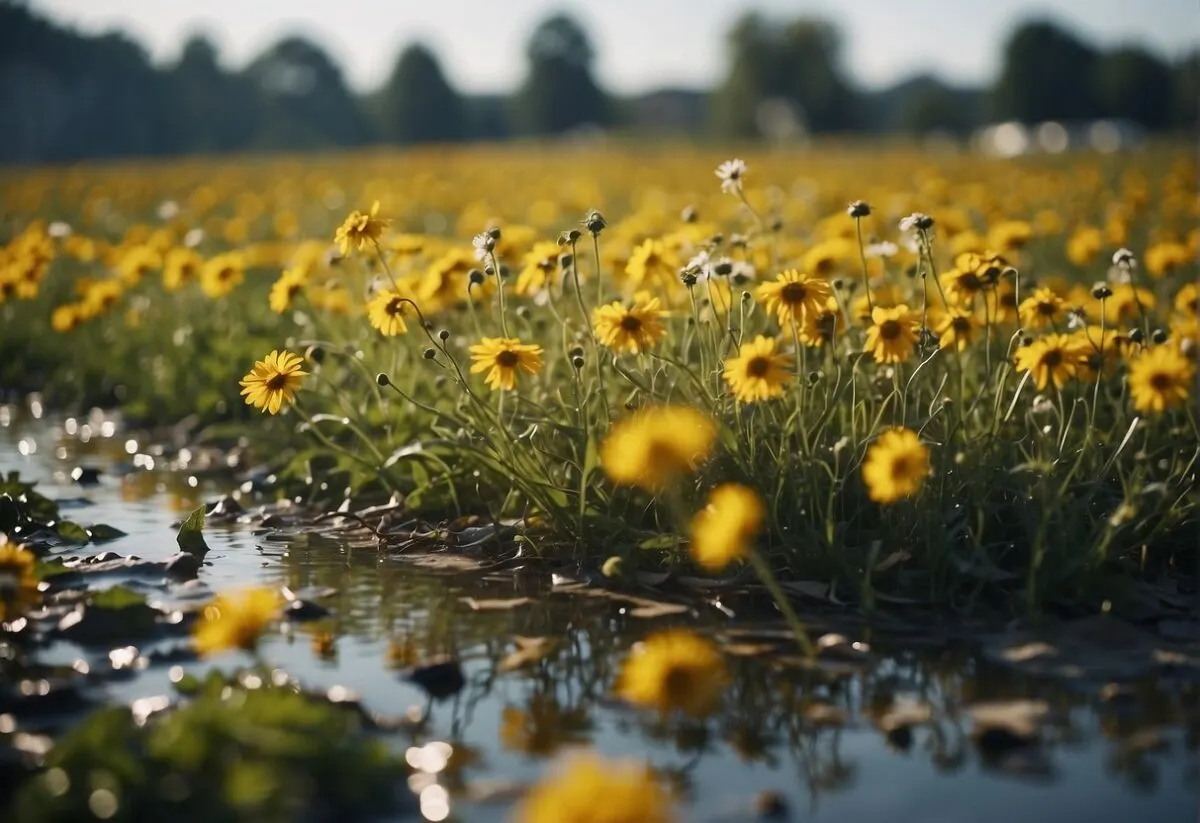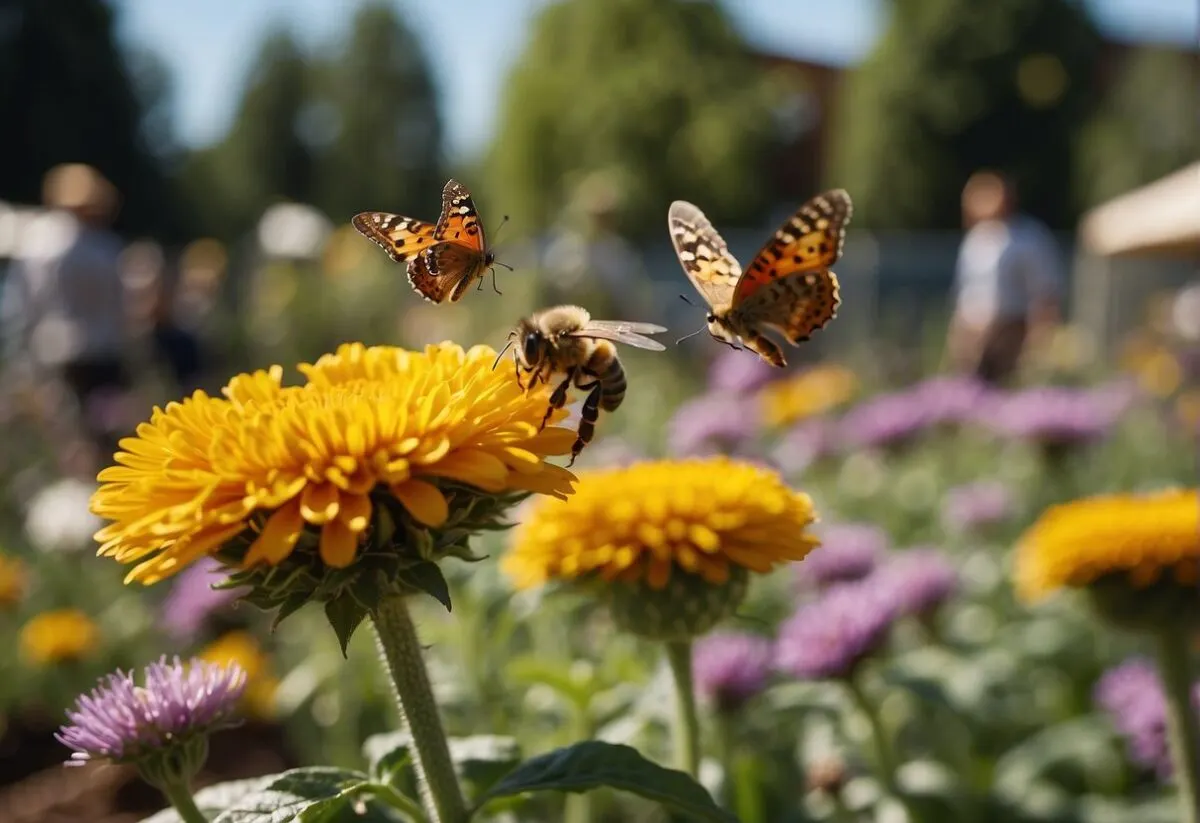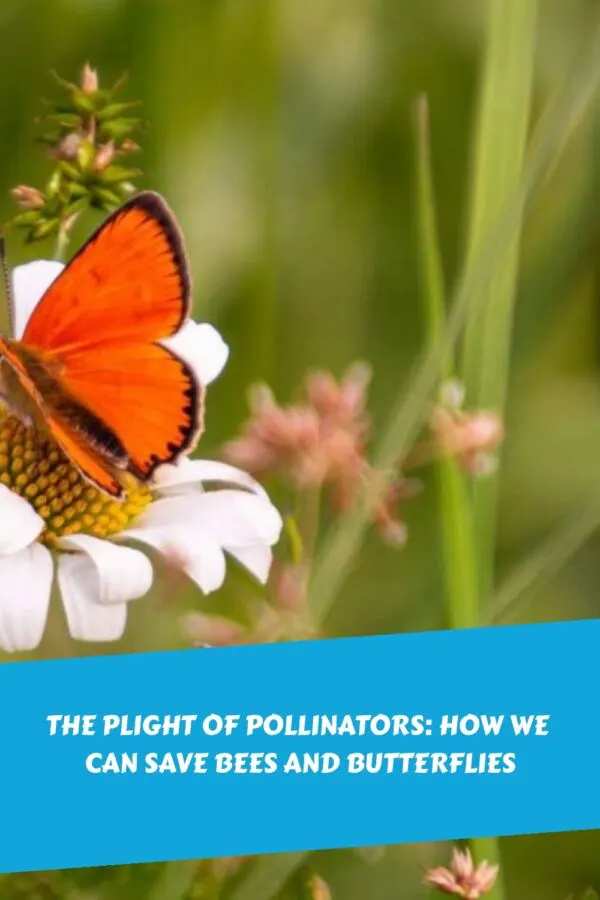Pollinators, encompassing a diverse array of insects and animals like bees, butterflies, birds, and bats, are indispensable in maintaining ecosystems’ health worldwide. Their role in pollinating flowering plants is crucial, not just for the natural world but also for human agriculture.
Over 85% of the world’s flowering plants require pollination to reproduce, which includes a significant proportion of crop species critical to the global food supply. Unfortunately, these vital contributors to our planet’s biodiversity are experiencing a widespread decline, a trend that poses a serious risk to the environment and the future of food production.

The factors contributing to the decline of pollinator populations are multifaceted and deeply intertwined with pressing environmental issues. Habitat loss, pesticide use, disease, and climate change are among the leading causes that disrupt pollinator health and activity. Losing traditional foraging and nesting habitats has pushed many species to the brink.
As the scientific community rigorously works to understand and combat these threats, it becomes increasingly apparent that conservation efforts are not just a matter of preserving species but also a fundamental action to uphold the ecological balance.
Conservation initiatives are therefore urgent to reverse the decline of pollinators and secure the integrity of ecosystems and the sustainability of agriculture globally. These efforts range from creating pollinator-friendly gardens to advocating for policy changes that protect pollinator habitats.
The broader impact of such actions also contributes to fighting climate change, as vibrant, diverse ecosystems are better equipped to withstand and adapt to environmental fluctuations. Safeguarding the well-being of pollinators is not a solitary battle — it is a foundational aspect of preserving the health of our planet for future generations.
The Causes of Decline

Pollinators, crucial for the reproduction of many plants, face a severe threat from various fronts. Habitat loss significantly impacts their survival, with vital areas for nesting and foraging shrinking due to agricultural expansion and urban development.
Pesticides pose another critical challenge, with chemicals used to protect crops often harming non-target species, including pollinators. Exposure to these toxic substances can be lethal or impair a pollinator’s ability to effectively forage for nectar and pollen.
What’s more, the introduction of invasive species competes with native fauna for resources. These species can dominate the available habitat, outcompete native bees, and disrupt existing ecological balances. Pesticide use and pollution extend beyond agricultural areas, affecting a broad spectrum of insects, birds, mammals, and other pollinators.
Current agricultural practices emphasizing monoculture result in a lack of diversity in pollen and nectar sources. This lack of variety can harm bee populations’ diet and health and that of other pollinators. These environmental changes present an urgent threat to the biodiversity on which human food production relies.
See Related: Green Revolution Pros and Cons
Table: Key Challenges to Pollinator Health
| Challenge | Effect on Pollinators |
|---|---|
| Habitat loss | Reduces foraging and nesting areas |
| Pesticides | Causes direct toxicity and impairs foraging |
| Invasive species | Outcompetes native pollinators for resources |
| Monocultures | Reduces the diversity of pollen and nectar sources |
The decline of pollinators holds tremendous implications for ecosystems and human agriculture. It’s paramount to recognize and address these issues urgently to safeguard pollinator populations and their vital services.
Habitat Restoration

Habitat restoration is pivotal for the survival of pollinators, who are crucial for the health of ecosystems. The goal is to establish environments where pollinators can thrive throughout the year.
- Native Plants: The backbone of habitat restoration. They provide pollinators with nectar, pollen, and seeds. Incorporating a variety of native plants with overlapping bloom times in restoration projects ensures a continuous food source.
- Trees and Shrubs: They play a critical role. Apart from offering nectar and pollen, many trees become host plants for caterpillars, including those of the monarch butterfly.
- Wildlife Gardens: The National Wildlife Federation encourages the creation of wildlife gardens, emphasizing native plants. Gardens that comply with certain requirements can become a Certified Wildlife Habitat.
- Pollinator Gardens: Specialized plantings that provide nectar plants for adult insects and host plants for their larvae. For instance, milkweed is a crucial host plant for monarchs, supporting their entire life cycle.
- Agricultural Impact: Pollinators affect agriculture, as they are necessary for reproducing most crops. Their role in producing fruit and seeds is indispensable.
- Education and Development: Investing in education about pollinators’ significance and researching best habitat restoration practices is vital.
- Nesting and Overwintering: Habitat restoration also includes areas for nesting and overwintering, ensuring pollinators’ survival through different life stages. Ground cover, for instance, can provide essential shelter.
- Ecosystem Services: Pollinators contribute to biodiversity and help maintain healthy ecosystems. Restoring habitats not only benefits wildlife but also supports human life through the ecosystem services that pollinators provide.
See Related: How to Utilize Greenhouse Bees for Pollination
Pesticide Alternatives

Pollinators are vital to the ecosystem, playing a crucial role in the pollination of flowering plants, which are essential for the production of fruits and vegetables. Protecting these vital insect pollinators is critical for food security and has significant economic value.
Traditional pesticide use poses a threat to pollinators, but alternative methods can help safeguard these beneficial animals without compromising the ecosystem’s health.
Physical Controls
- Insecticidal Soaps: Target soft-bodied pests (e.g., aphids, mealybugs). After drying, they pose no threat to pollinators.
- Manual Removal: Removing caterpillars and eggs by hand can protect plants without chemical use.
Biological Controls
- Beneficial Predators: Introduce natural predators that feed on harmful pests but not on pollinators.
- Bacteria: Bacillus thuringiensis (Bt) targets specific caterpillars while being safe for pollinators.
Cultural Practices
- Diverse Planting: A variety of nectar-rich flowers supports a robust pollinator habitat.
- No-Till Gardening: Minimizes soil disturbance, preserving natural predators of pests.
Habitat Enhancement
- Provide Nesting Resources: Deadwood and brush can offer homes for native bees and other pollinators.
- Sandy Soil: Some bees nest in the ground and require sandy soil for their homes.
Chemical Alternatives
- Organic Herbicides: Safer for pollinators, focus on specific weeds without harming the broader environment.
- Selective Pesticides: Choose pesticides that target specific pests and have a minimal impact on pollinators.
Implementing these strategies can significantly reduce or eliminate the need for harmful pesticides, creating a safer environment for pollinators and ensuring the ongoing health of the plants they help to fertilize.
See Related: Best Glass Greenhouses in 2023
Community Gardening for Pollinators

Community gardens offer vital sanctuaries for pollinators, from butterflies and bees to birds and bats. These spaces enrich urban and suburban areas and serve as crucial pit stops for pollinators that facilitate reproduction by insect pollination, which is crucial for food crops like almonds and the biodiversity of our ecosystems.
Creating Habitats
By integrating native flowering plants and shrubs, community gardens can provide vital forage and nutrition. It is critical to offer a variety of plant materials that flower at different times throughout the summer, ensuring that pollinators have access to resources from spring through fall.
Additionally, plants like milkweed support specific species, like monarch caterpillars, which are vital for butterfly population continuity.
Water Sources
A shallow birdbath or a small muddy patch creates a water source for pollinators, which is as crucial as floral resources. Not only hummingbirds but also bees and butterflies need water for their survival.
Alternative Structures
Besides plants, community gardens can build ‘bee hotels’ or leave natural tunnels and deadwood to encourage nesting. Such structures support species with specific habitat needs, like solitary bees and beetles.
Reduce Lawn Space
Minimizing lawn areas in favor of pollinator gardens decreases the need for frequent mowing, reducing disruption and promoting a healthier habitat for pollinating invertebrates and mammals.
Education and Engagement
Community gardens provide an excellent platform for education, where naturalists like David Mizejewski can advocate for the urgent need to protect pollinators. They bring people together to learn and ask questions, fostering a collective effort to create green spaces that support these critical species.
By acting locally, community gardens play a pivotal role in the conservation of pollinators across the Americas. Their commitment to enhancing pollinator habitats is an urgent and educational crusade ensuring the sustainability of both pollinators and the environments they enrich.


